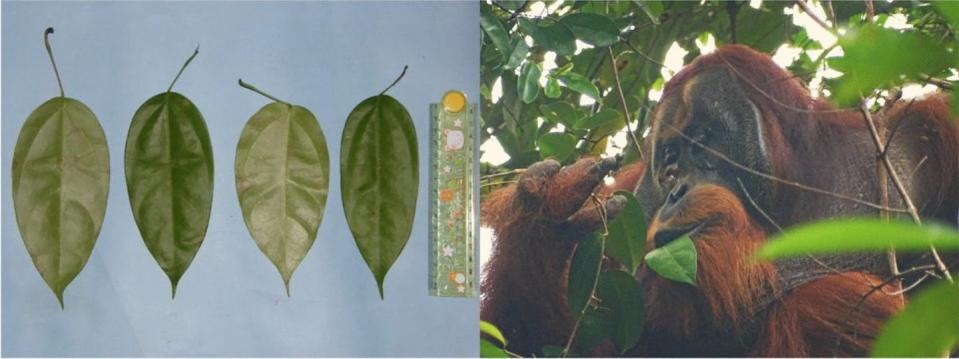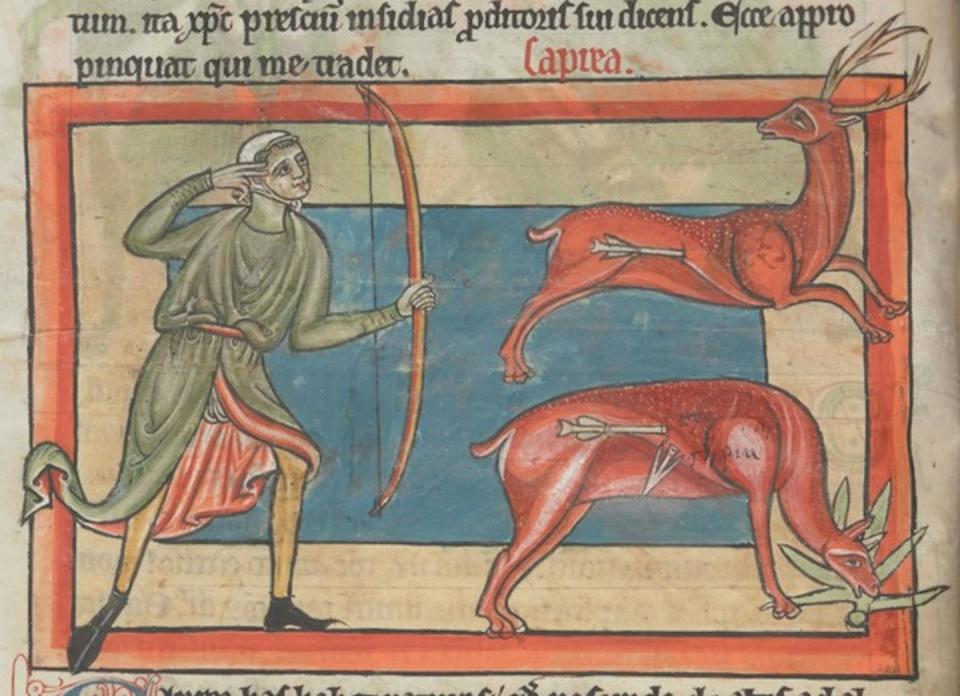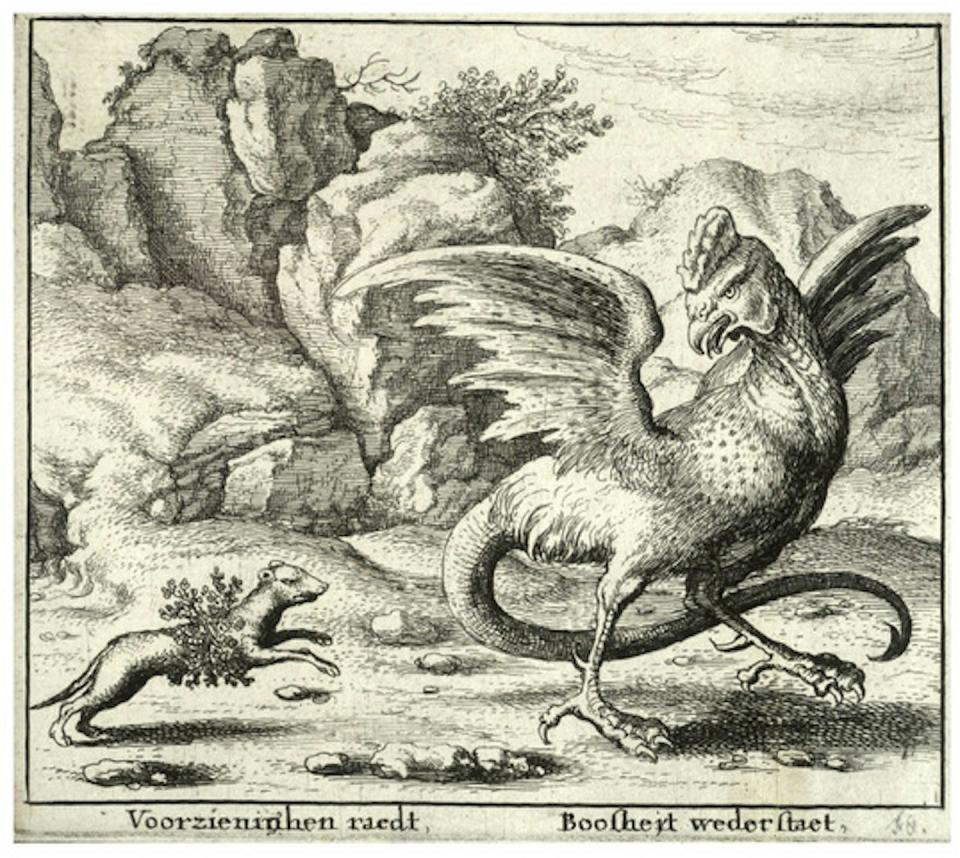When a wild orangutan in Sumatra recently suffered a facial wound, apparently after a fight with another male, he did something that caught the attention of the scientists who were observing him.
The animal was chewing on the leaves of a liana, a plant not normally eaten by monkeys. Over several days, the orangutan gently applied the juice to his wound and then covered it with a paste of chewed vine. The wound healed with only a faint scar. The tropical plant he selected has antibacterial and antioxidant properties and is known to relieve pain, fever, bleeding and inflammation.
The striking story was picked up by media worldwide. In interviews and in their research paper, the scientists stated that this is “the first systematically documented case of active wound treatment by a wild animal” with a biologically active plant. The discovery will “provide new insights into the origins of human wound care.”

The behavior of the orangutan seemed familiar to me. As a historian of ancient science who studies what the Greeks and Romans knew about plants and animals, I was reminded of similar cases reported by Aristotle, Pliny the Elder, Aelian and other ancient naturalists. A remarkable number of stories from ancient times to the Middle Ages describe self-medication by many different animals. The animals used plants to treat diseases, ward off parasites, neutralize toxins and heal wounds.
The term zoopharmacognosy – ‘knowledge of veterinary medicine’ – was coined in 1987. But as the Roman natural historian Pliny noted 2,000 years ago, many animals have made medical discoveries that are useful to humans. A large number of medicinal plants used in modern medicines were first discovered by indigenous peoples and cultures of the past, who observed animals that used and mimicked plants.
What you can learn by watching animals
Some of the earliest written examples of self-medication in animals appear in Aristotle’s History of Animals from the fourth century BC, such as the well-known habit of dogs to eat grass when sick, probably to purify and heal themselves. deworming.
Aristotle also noted that bears seek wild garlic as their first food after hibernation. It is rich in vitamin C, iron and magnesium, healthy nutrients after a long winter nap. The Latin name reflects this folk belief: Allium ursinum translates to ‘bear lily’, and the common name in many other languages refers to bears.


Pliny explained how the use of dittany, also known as wild oregano, to treat arrow wounds arose from watching wounded deer graze on the herb. Aristotle and Dioscorides attributed the discovery to wild goats. Virgil, Cicero, Plutarch, Solinus, Celsus and Galen claimed that dittany has the ability to expel an arrowhead and close the wound. Among the many known phytochemical properties of dittany are antiseptic, anti-inflammatory and anticoagulant effects.
According to Pliny, deer also had an antidote to poisonous plants: wild artichokes. The leaves relieve nausea and stomach cramps and protect the liver. To cure themselves of spider bites, Pliny wrote, deer ate crabs washed up on the beach, and sick goats did the same. It is striking that crab shells contain chitosan, which strengthens the immune system.
When elephants accidentally swallowed chameleons hidden in green foliage, they ate olive leaves, a natural antibiotic to combat salmonella harbored by lizards. Pliny said that ravens eat chameleons, but then ingest bay leaves to counteract the lizards’ toxicity. Antibacterial bay leaves relieve diarrhea and gastrointestinal complaints. Pliny noted that blackbirds, partridges, jays and pigeons also eat bay leaves for digestive problems.


It was said that weasels rolled in the evergreen alley to ward off wounds and snake bites. Fresh rue is poisonous. Its medical value is unclear, but the dried plant is included in many traditional folk medicines. Swallows collect another poisonous plant, celandine, to make a poultice for the eyes of their chicks. Snakes coming out of hibernation rub their eyes on fennel. Fennel bulbs contain compounds that promote tissue repair and immunity.
According to the naturalist Aelian, who lived in the third century BC, the Egyptians traced much of their medical knowledge to the wisdom of animals. Aelian described elephants treating spear wounds with olive flowers and oil. He also reported storks, partridges and turtle doves crushing oregano leaves and applying the paste to wounds.
The study of animal medicine continued into the Middle Ages. An example from the 12th-century English compendium of animal stories, the Aberdeen Bestiary, tells of bears covering sores with mullein. Folk medicine prescribes this flowering plant to soothe pain and heal burns and wounds, thanks to its anti-inflammatory chemicals.
Ibn al-Durayhim’s 14th-century manuscript ‘The Usefulness of Animals’ reported that swallows cured the eyes of nestlings with turmeric, another anti-inflammatory. He also noted that wild goats chew and apply peat moss to wounds, much like the Sumatran orangutan did with vine. Peat moss dressings neutralize bacteria and fight infections.
Nature’s pharmacopoeia
Of course, these pre-modern observations were folk knowledge and not formal science. But the stories reveal long-term observation and imitation of various animal species that themselves work with bioactive plants. Just as traditional indigenous ethnobotany leads to life-saving medicines today, scientific testing of the ancient and medieval claims could lead to discoveries of new therapeutic plants.
Self-medication in animals has become a rapidly growing scientific discipline. Observers report observations of animals, from birds and rats to porcupines and chimpanzees, deliberately using an impressive repertoire of medicinal substances. A surprising observation is that finches and sparrows collect cigarette butts. The nicotine kills mites in bird nests. Some veterinarians even allow sick dogs, horses and other pets to choose their own prescriptions by sniffing various botanical compounds.
Mysteries persist. No one knows how animals sense which plants cure diseases, heal wounds, repel parasites or promote health in some other way. Are they deliberately responding to certain health crises? And how is their knowledge transferred? What we do know is that we humans have learned healing secrets from watching animals self-medicate for thousands of years.
This article is republished from The Conversation, an independent nonprofit organization providing facts and trusted analysis to help you understand our complex world. It was written by: Adrienne Burgemeester, Stanford University
Read more:
Adrienne Mayor does not work for, consult with, own stock in, or receive funding from any company or organization that would benefit from this article, and has disclosed no relevant affiliations beyond their academic appointment.